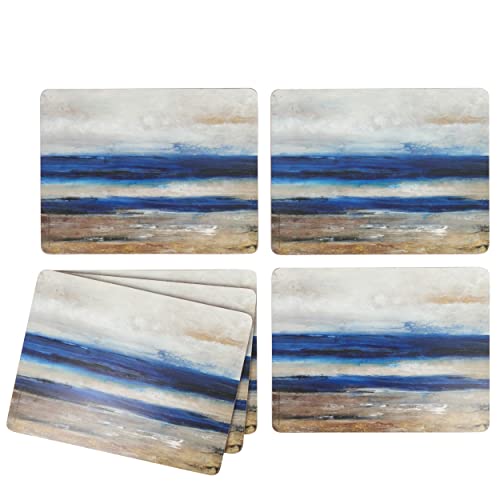The Origins of Placemats
Placemats have a long and fascinating history dating back centuries. These handy table accessories have evolved over time, serving both practical and decorative purposes. From their humble beginnings as simple pieces of fabric or animal skins used to protect tables from spills and stains, placemats have become a popular addition to dining tables around the world.
Ancient Origins
The concept of protecting a table during meals can be traced back to ancient civilizations. In ancient Egypt, for example, tables were made of stone or wood and were often covered with palm leaves or reed mats to keep them clean. In ancient Greece, elegant tablecloths were used to protect the table, but it wasn’t until the Middle Ages that the use of individual placemats became more common.
Development and Popularity
During the Middle Ages and Renaissance periods, placemats started to gain popularity among the upper classes. It was during this time that the culinary arts flourished, and the nobility sought to display their wealth and status through elaborate table settings. Placemats made of rich fabrics such as silk or velvet were used to add a touch of luxury to the dining experience.
By the 18th and 19th centuries, placemats became more accessible to the general population. As industrialization progressed, textiles became more affordable, and people began to use placemats made of cotton or linen. These materials were easier to clean and allowed for more frequent use, making placemats a staple in households across various social classes.
Evolution of Design
Over time, placemats evolved in terms of design and style. In the early 20th century, Art Nouveau and Art Deco movements influenced the aesthetics of placemats. Intricate patterns, vibrant colors, and geometric shapes became popular choices for those looking to add a touch of elegance to their dining tables.
In more recent decades, placemats have become an avenue for self-expression and personal style. Today, you can find placemats in a wide range of designs, from minimalist and modern to playful and whimsical. Some placemats feature printed designs or illustrations, while others are made with innovative materials such as silicone or vinyl, which offer easy cleanup and durability.
Modern Uses and Variations
While their primary function is still to protect the table from spills and heat, placemats have evolved to serve additional purposes. They can be used to define individual place settings, create a cohesive theme or color scheme, or simply add visual interest to a table.
In addition to traditional rectangular placemats, there are now various shapes and sizes available, including round, oval, and even custom-cut options. Some placemats also include built-in features such as pockets for utensils or compartments for condiments, providing both practicality and convenience.
The history of placemats is a testament to their enduring practicality and versatility. From ancient Egypt to modern-day dining tables, placemats have evolved alongside changing cultural tastes and technological advancements. Whether used for protection, decoration, or self-expression, placemats continue to be an essential accessory in the world of dining.






